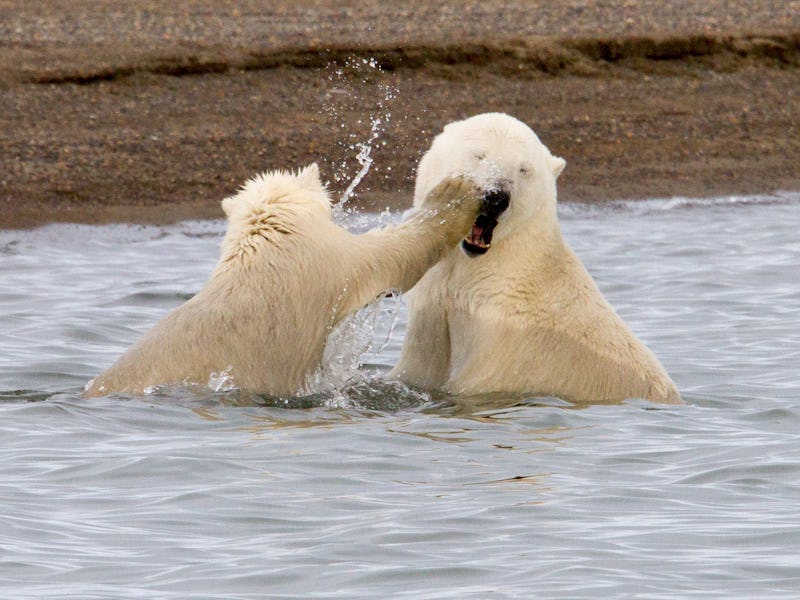New Report: Arctic of the Future Will Be Barely Recognizable
Walruses and bears are being squeezed out as grizzlies and killer whales move in.

This week’s National Atmospheric and Oceanic Administration Arctic Report Card reveals that over-land temperatures have hit record-high levels.
The average air temperature over land was the highest ever between October 2014 and September 2015, up 5.4 degrees Fahrenheit compared with the beginning of the 20th century.
There are two major consequences to this warming for the fish, mammals, and birds that call the Arctic home.
Walruses are being crowded onto land as sea ice disappears.
For one, disappearing sea ice means a loss of habitat for all sorts of northern animals. It’s not just the polar bears that depend on ice platforms to find food. This year, we saw throngs of walruses forced onto land because there were no ice platforms on which to chill.
“The decline in sea ice is dramatically changing the habitat for walruses — large marine mammals that traditionally use sea ice for mating, giving birth to young, finding food and shelter from storms and predators,” according to the NOAA’s announcement.
“In recent years, large numbers of walrus have been forced to haul out on land in northwest Alaska. This behavior, documented through aerial surveys, has created problems such as overcrowding which has led to stampedes that have killed calves, and difficulty finding food.”
In addition to habitat loss, new species are moving into the Arctic as temperatures soar. This can result in new rivalries, like the deadly confrontation between an Arctic and a red fox that won this year’s Wildlife Photographer of the Year award. Even killer whales have moved north, preying on species that previously had few predators, including bowhead whales and narwhal.
Orcas are asserting themselves as new kings of an ice-free Arctic.
New species can also push the locals further north, increasing the stress of habitat loss. This northward migration also results in new species, as animals that have been mostly kept apart come into contact and interbreed — Yes, a grolar bear is an actual real thing. Interbreeding isn’t fundamentally bad or good, as the offspring can either be stronger or weaker than their parents. But depending on how it all plays out, the mixing can threaten the survival of one or both parent species.
There’s a lot we don’t know about what the Arctic will look like a few decades from now. It’s pretty clear, though, that the dramatic changes we’ve seen to date are just the tip of the iceberg. The Arctic is warming at twice the rate of the rest of the planet, and the planet is unlikely to quit warming any time soon.
The agreement reached on climate change last week in Paris commits to limiting warming to 3.6 degrees Fahrenheit, which is about double the warming the world has already seen compared with pre-industrial times.
If the Arctic continues to warm faster than the rest of the world, future changes to the environment are likely to be at least as dramatic as those that have already occurred. Which species manage to survive is anyone’s guess.